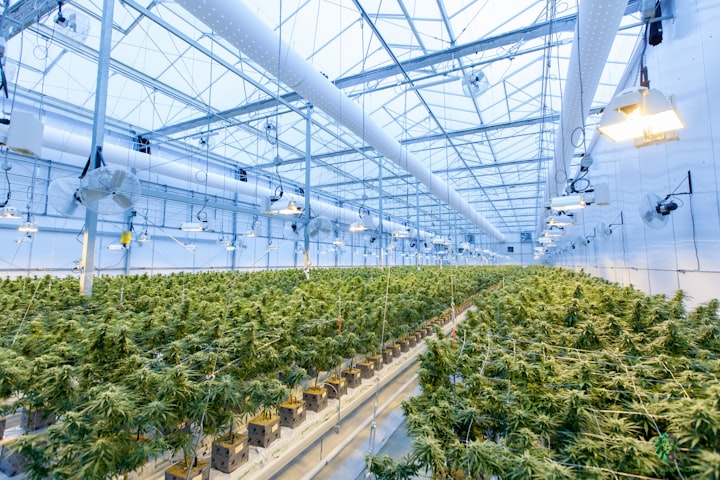California’s Legal Pot: Facing Illegal Impacts
California’s Legalization of Pot Has Come At A Cost
California’s legalization of marijuana has undoubtedly transformed the state’s landscape, but has it come at a cost? As the marijuana industry in California continues to grow, are there hidden consequences of this newfound legality?
You would assume that the legalization of marijuana would quell illegal activities associated with the drug. I mean, that is what we were and are told by the politicians. However, as we delve deeper into the issue, it becomes apparent that the situation is far more complex.
In this article, we will explore the illegal consequences of the legal marijuana industry in California, shedding light on the challenges faced by law enforcement, growers, and the wider community. How have marijuana laws and regulations inadvertently contributed to the surge in illicit activities surrounding this once-forbidden plant?
Let us peel back the layers of California’s legal pot industry and discover the dark side that lurks beneath the surface. Are we seeing a new breed of criminality emerging in the wake of marijuana legalization, or is this simply a consequence of a system in its infancy?
The Prolific Marijuana-Producing Region of Humboldt County
Humboldt County, located in Northern California, is renowned for its prolific cultivation of cannabis. Together with Mendocino and Trinity Counties, it forms the Emerald Triangle, the largest cannabis-producing region in the United States. The remote and rural terrain of Humboldt County has historically made it an ideal location for covert marijuana cultivation, attracting both legal and illegal growers to the area.

A Picturesque Landscape
The picturesque landscape of Humboldt County, with its dense forests and mountainous terrain, provides the perfect backdrop for cannabis cultivation. The region’s unique microclimate, featuring cool temperatures and high humidity, creates optimal growing conditions for the cannabis plant. This, combined with the isolation and tight-knit community of growers, has allowed Humboldt County to thrive as a cannabis-producing hub.
For decades, Humboldt County has been at the forefront of the cannabis industry, producing some of the highest-quality marijuana in the world. The county’s reputation for excellence has attracted cannabis enthusiasts and connoisseurs from near and far, contributing to the region’s vibrant cannabis culture.
Legal and Illegal Growers Side By Side
However, alongside the legal growers who operate within the confines of the Law, Humboldt County has also been a magnet for illicit cannabis cultivation. The allure of high profits, coupled with the county’s remote location and vast stretches of land, has attracted illegal growers looking to capitalize on the lucrative market.
Despite ongoing efforts to regulate and legitimize the cannabis industry in California, the persistence of illegal cultivation in Humboldt County poses challenges to law enforcement and the licensed market. The coexistence of legal and illegal operations within the same region has created a complex and often contentious environment.

The Troublesome History of Humboldt County
Humboldt County has a troubled history with law enforcement due to its cannabis cultivation. The area gained notoriety as “Murder Mountain” due to a high number of missing persons and unsolved murders. In the 1980s, the Campaign Against Marijuana Planting (CAMP) led to significant clashes between law enforcement and cannabis growers, turning parts of Northern California into a war zone.

The Impact of Marijuana Legalization in Humboldt County
Ironically, the legalization of marijuana in California through Proposition 64 has created new challenges for Humboldt County. The introduction of taxes, permits, and regulations has forced small-scale growers to either shut down their businesses or continue operating in the black market. This increase in black market activity has not been limited to cannabis, with other illegal drugs like meth and heroin being trafficked in the region.

Unintended Consequences of Proposition 64
While Proposition 64 was designed to regulate and control the legal marijuana industry, it has inadvertently fueled the growth of the black market trade in Humboldt County. Small-scale growers, unable to afford the high costs associated with permits and taxes, have been pushed into the illicit market. The allure of higher profits and lack of regulation have made the black market an attractive option for many, resulting in an increase in illegal drug trafficking within the region.

A Ripple Effect on Other Illicit Activities
The surge in black market trade driven by marijuana legalization has had far-reaching effects beyond the cannabis industry. Criminal organizations have taken advantage of the lucrative illegal drug trade, expanding their operations to include substances like methamphetamine and heroin. This has resulted in a rise in drug-related crimes and heightened concerns for public safety in Humboldt County.
The Exploitation of Labor and Environmental Damage
The surge in illegal cannabis cultivation in California has had far-reaching consequences, including the exploitation of labor and extensive environmental damage. Workers in the illicit industry often face dangerous working conditions and are frequently denied fair wages, perpetuating a cycle of labor exploitation. Many of these workers are smuggled into the United States expressly to work illicit grow operations. These people are unknowns and expendable to the illicit grow operators, who have no incentive to pay them or even let them leave their labors unharmed. If these workers disappear, who knows besides their families back home? These families are not likely to seek U.S. law enforcement assistance to locate their loved ones.
In addition to labor exploitation, workers in the illegal cannabis industry are exposed to hazardous environments, including the use of harmful pesticides and the diversion of large amounts of water from natural sources. These unregulated practices have led to significant environmental degradation, impacting local ecosystems and contributing to water scarcity in affected regions.
The cultivation of cannabis in illegal operations often involves the use of banned pesticides and herbicides, posing a threat to both human health and the environment. These chemicals can contaminate the soil, water sources, and wildlife, causing long-term damage to the ecosystem and potentially endangering nearby communities.

Escalation of Cannabis-Related Violence
The illegal cannabis market in California has led to a concerning escalation of violence. Organized criminal enterprises operating within the illicit industry are engaging in violent cartel-like activities, including shootouts, robberies, and kidnappings. Unfortunately, these incidents have become increasingly common, leaving residents in affected areas in constant fear and facing a deteriorating quality of life.
The surge in cannabis-related violence is a direct consequence of the thriving illegal market. With minimal repercussions, criminal organizations operate with near impunity, using violence to protect their operations and eliminate rival entities. The increasing prevalence of violence within the illegal cannabis trade has had a devastating impact on communities throughout California.
The rise in shootouts, where rival factions clash over control of lucrative drug territories, has put innocent bystanders at risk and strained law enforcement resources. Additionally, robberies targeting illegal cannabis dealers have surged, with criminals targeting both individuals and businesses involved in the illicit trade. The resulting atmosphere of lawlessness has created an environment where the safety and security of residents are compromised.
Kidnappings have also become a distressing reality within the illegal cannabis market. Criminal organizations resort to such extreme measures to exert control over their rivals or to intimidate individuals involved in the trade. The consequences of these kidnappings extend beyond the immediate victims, generating fear and perpetuating a cycle of violence.
The escalation of cannabis-related violence has far-reaching implications and underscores the urgent need for effective enforcement measures to combat the illegal market. The safety and well-being of Californians rely on the concerted efforts of law enforcement agencies, policymakers, and community leaders to address this pressing issue, ensuring a safer future for all.

Overwhelmed Law Enforcement and Regulatory Challenges
Law enforcement agencies and regulatory bodies in California are facing significant challenges in dealing with the illegal marijuana industry. The problem’s sheer scale, limited resources, and conflicting priorities have overwhelmed law enforcement agencies and code enforcement departments. Despite their enforcement efforts, regulatory hurdles and a lack of resources have hindered the effective crackdown on the illegal market.
The enforcement of marijuana laws and regulations has become a complex and demanding task. The widespread cultivation, distribution, and consumption of marijuana in California have created a thriving black market that perpetuates criminal activities. Law enforcement agencies, already burdened with various other responsibilities, struggle to effectively allocate sufficient resources to combat this illicit industry.
In addition, there are regulatory hurdles that impede the achievement of desired outcomes. The process of crafting and implementing regulations to oversee the legal marijuana industry is an ongoing challenge. Continuous amendments and revisions to the existing rules and limited coordination among regulatory bodies have created an environment where illegal activities can thrive.
Another challenge is the limited resources available to law enforcement and regulatory agencies. Budget constraints, staffing shortages, and competing priorities all contribute to the difficulty of effectively enforcing marijuana laws and regulations. With limited manpower and financial support, agencies are forced to allocate their resources strategically, often diverting their attention away from addressing the illegal marijuana market.
The absence of a coordinated approach, coupled with the overwhelming demand for enforcement and regulatory action, has allowed the illegal marijuana industry to persist and expand. The lack of sufficient enforcement measures has emboldened criminal enterprises, jeopardizing public safety and undermining the efforts of legal marijuana businesses.
Efforts must be made to address these challenges and strengthen the enforcement and regulatory landscape surrounding the marijuana industry in California. Coordinated efforts among law enforcement agencies and regulatory bodies are crucial to disrupt the operations of the illegal market. Additionally, increased funding and allocation of resources will enable more effective enforcement actions and proper regulation of the legal marijuana market.
The path to overcoming these challenges may be arduous. Still, with a commitment to enforcement, collaboration, and resource allocation, California can begin to assert control over its marijuana industry and minimize its detrimental impact on society.

Devastating Impacts on Legal Growers
The proliferation of the illegal cannabis market has had devastating impacts on legal growers. Despite the legalization of marijuana in California, the dominance of the illicit industry has overshadowed the intended benefits. Legal growers now face financial ruin and struggle to survive in an oversaturated market.
The influx of illegal cannabis has caused a wholesale price crash, resulting in a surplus that legal growers are unable to compete with. The wholesale prices have plummeted to such an extent that many small-scale farmers can barely cover their production costs, let alone turn a profit. This dire situation has pushed legal growers to the brink, with some forced to abandon their businesses altogether.
The licensed market struggles to establish its footing amidst the overwhelming presence of the illegal cannabis trade. The unlawful industry, free from the constraints of regulation and taxation, can offer lower prices that undercut the legal market. This makes it difficult for legal growers to attract customers and sustain their businesses.

The Need for Stronger Enforcement and Regulation
The current situation calls for more robust enforcement measures and more effective regulation to address the illegal cannabis market in California. Despite efforts to regulate the market, the surge in black market activities has posed significant challenges for law enforcement and legal growers. Improving coordination among law enforcement agencies is crucial to combat the rampant black market trade. This includes sharing intelligence and resources and collaborating on joint operations to dismantle illegal operations.
In addition to better enforcement, increased penalties for illegal activities are necessary to deter individuals from participating in the illicit cannabis market. Stricter regulations can minimize loopholes and ensure compliance with the Law. Implementing robust licensing procedures and monitoring systems can also aid in identifying and shutting down illegal operations. By establishing a comprehensive regulatory framework, the state can create a level playing field for legal growers, giving them the support and protection they need.
Efforts should also be directed towards addressing the root causes of the illegal market. This includes targeting the sources of illicit cannabis production and distribution networks. By disrupting the supply chain, law enforcement can make it more difficult for illegal operators to profit from their activities. Furthermore, public education campaigns can raise awareness about the dangers and consequences of purchasing cannabis from unregulated sources, encouraging consumers to choose legal options.
Ensuring the effectiveness of enforcement measures and regulations requires ongoing evaluation and adaptation. Regular assessment and policy updates can help identify areas for improvement and enhance the state’s response to the illegal market. By constantly adjusting strategies to combat the ever-evolving tactics of unlawful operators, law enforcement and regulatory bodies can stay one step ahead.

Conclusion
The legalization of marijuana in California has brought with it unintended consequences, particularly the proliferation of illegal activities within the industry. From Humboldt County to remote areas of the state, the illegal marijuana market has grown, resulting in several adverse outcomes. These include increased violence, environmental damage, and exploitation.
To effectively address these issues, it is crucial to implement stronger enforcement measures and more robust regulations. By cracking down on illegal activities and establishing a comprehensive framework, the state can mitigate the impacts of the illicit marijuana industry and safeguard the interests of legal growers.
California’s experience is a reminder of the complexities and challenges associated with marijuana legalization. It underscores the need for a carefully designed regulatory system that balances industry growth with strict enforcement against illicit activities. Only through effective regulation and enforcement can California overcome the consequences of a thriving illegal marijuana market and realize the potential benefits of legalization. However, one question still stands out with all that was examined in the article. Was this a good idea after all?
Wish to continue your study of crime case? Consider the book linked below. (Please note that this is an affiliate link. If you make a purchase I will receive a small commission at no additional expense to you).
About the Creator
Matthew Jack
My 30-year law enforcement career fuels my interest in true crime writing. My writing extends my investigative mindset, offers comprehensive case overviews, and invites you, my readers, to engage in pursuing truth and resolution.







Comments
There are no comments for this story
Be the first to respond and start the conversation.